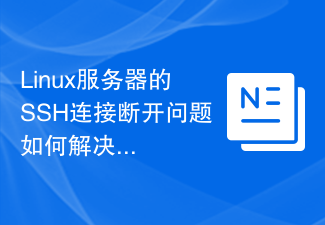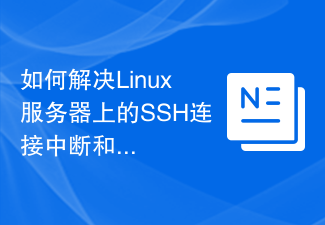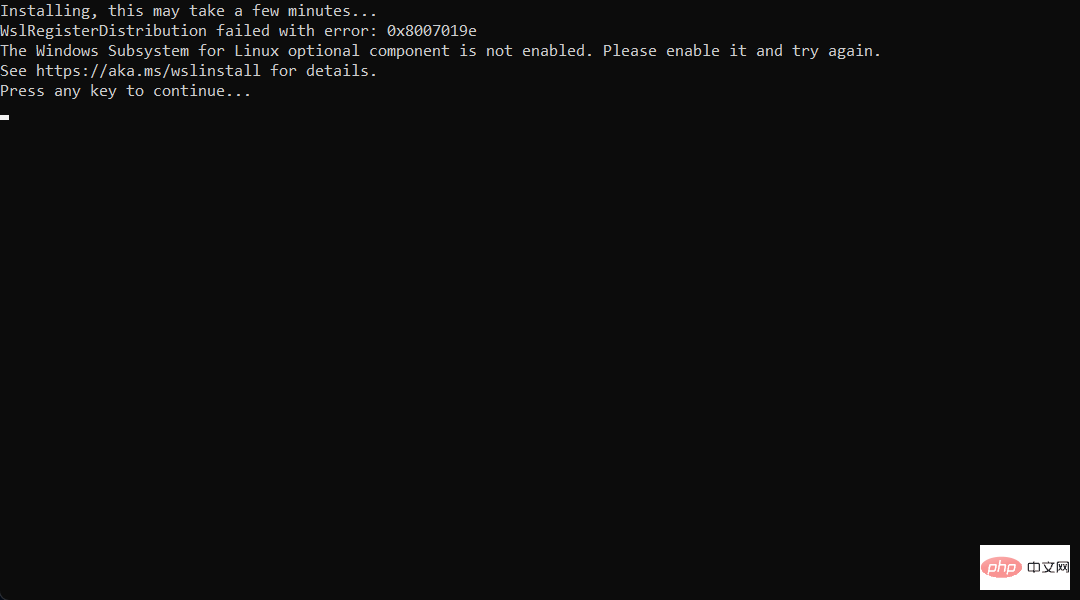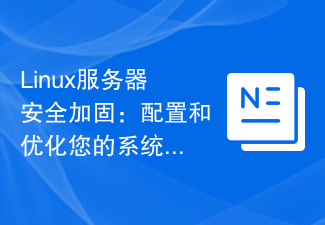 Operation and Maintenance
Operation and Maintenance Linux Operation and Maintenance
Linux Operation and Maintenance Linux Server Defense: Protect web interfaces from malicious file upload attacks.
Linux Server Defense: Protect web interfaces from malicious file upload attacks.
Linux Server Defense: Protecting Web Interfaces from Malicious File Upload Attacks
In recent years, with the popularity and development of the Internet, the use of Web applications has become more and more widely. However, along with it comes various security threats, one of which is malicious file upload attacks. Malicious file upload attacks refer to attackers uploading files containing malicious code to the server to gain server permissions or spread malicious content.
In order to protect the web interface from malicious file upload attacks, we can take some effective defensive measures. The following will introduce some common defense methods and provide relevant code examples.
- File type check
First, we can filter malicious files by checking the file type of the uploaded file. On the server side, we can use the Fileinfo extension or the mime_content_type() function to get the MIME type of the uploaded file. We can then compare against the whitelist and only allow specific file types to be uploaded, other types of files will be rejected.
Sample code:
<?php
$allowedTypes = array('image/jpeg', 'image/png', 'image/gif');
$uploadedFile = $_FILES['file'];
if (in_array(mime_content_type($uploadedFile['tmp_name']), $allowedTypes)) {
// 允许文件上传
} else {
// 拒绝文件上传
}
?>- File name check
In addition to file type check, we can also check the uploaded file name. Attackers often use disguised file names to deceive servers. For example, an attacker could rename the shell.php file to shell.jpg to bypass the file type check. Therefore, we need to check if the extension of the file name matches the file type.
Sample code:
<?php
$allowedExtensions = array('jpg', 'jpeg', 'png', 'gif');
$uploadedFile = $_FILES['file'];
$fileInfo = pathinfo($uploadedFile['name']);
if (in_array(strtolower($fileInfo['extension']), $allowedExtensions)) {
// 允许文件上传
} else {
// 拒绝文件上传
}
?>- File size limit
In addition, we can also limit the size of uploaded files to prevent attackers from uploading excessively large files. The file consumes server resources or causes a denial of service. We can modify the upload file size limit in the php.ini configuration file through PHP's ini_set() function.
Sample code:
<?php
ini_set('upload_max_filesize', '2M');
ini_set('post_max_size', '2M');
?>- File storage location
Finally, in order to protect the server from attacks, we need to store the uploaded files in a secure Location. First, we should store the files outside the server root directory to prevent attackers from directly accessing uploaded files. Secondly, we can use random strings or hash values in the file storage path to increase the difficulty of guessing the file path.
Sample code:
<?php
$uploadedFile = $_FILES['file'];
$targetDirectory = '/path/to/uploads/';
$targetFileName = md5(uniqid()) . '-' . basename($uploadedFile['name']);
$targetPath = $targetDirectory . $targetFileName;
if (move_uploaded_file($uploadedFile['tmp_name'], $targetPath)) {
// 文件上传成功
} else {
// 文件上传失败
}
?>Summary:
Malicious file upload attacks pose a serious threat to server security. In order to protect the web interface from this attack, we can take a series of defensive measures, including file type checking, file name checking, file size limits, and reasonable settings of file storage locations.
However, these defensive measures alone cannot guarantee absolute security. Therefore, we should also regularly update server software, monitor server logs, and repair vulnerabilities in a timely manner to maintain server security.
Through effective defense methods and good security practices, we can protect the web interface from the threat of malicious file upload attacks to the greatest extent.
The above is the detailed content of Linux Server Defense: Protect web interfaces from malicious file upload attacks.. For more information, please follow other related articles on the PHP Chinese website!
 Linux服务器的SSH连接断开问题如何解决?Jun 30, 2023 pm 08:27 PM
Linux服务器的SSH连接断开问题如何解决?Jun 30, 2023 pm 08:27 PM如何解决Linux服务器上的SSH连接中断问题随着云计算和远程工作的普及,远程连接到Linux服务器成为了日常工作中不可或缺的一部分。然而,有时SSH连接可能会出现中断的情况,给我们带来不便和困扰。本文将分享一些解决Linux服务器上SSH连接中断问题的方法,帮助您更好地管理和维护服务器。一、网络问题首先,我们需要排除网络问题。网络稳定与否直接影响到SSH连
 如何解决Linux服务器上的SSH连接中断和拒绝问题Jun 29, 2023 am 09:02 AM
如何解决Linux服务器上的SSH连接中断和拒绝问题Jun 29, 2023 am 09:02 AM如何解决Linux服务器上的SSH连接中断和拒绝问题在日常的运维工作中,使用SSH(SecureShell)进行远程连接是非常常见的操作。尽管SSH是一种安全可靠的协议,但有时仍然会遇到连接中断和拒绝的问题。这些问题可能由于各种原因引起,本文将介绍一些常见的解决方法。检查网络连接首先,确认服务器和本地机器之间的网络连接是否正常。可以通过ping命令来测试服
 想在 Windows 11 上安装 AlmaLinux?这是怎么做的Apr 30, 2023 pm 08:13 PM
想在 Windows 11 上安装 AlmaLinux?这是怎么做的Apr 30, 2023 pm 08:13 PM在MicrosoftStore中,现在有一个版本的AlmaLinux与适用于Linux的Windows子系统兼容。这为用户提供了一系列令人印象深刻的新选项,因此我们将向您展示如何在Windows11上安装AlmaLinux。它于2021年3月发布,提供了第一个稳定的生产版本,此后该非营利基金会增加了许多新成员。最近的AMD是上个月加入的,时间是2022年3月。借助适用于Linux的Windows子系统,在Windows和Linux世界中工作的开
 Linux服务器安全:使用命令检查系统漏洞Sep 08, 2023 pm 03:39 PM
Linux服务器安全:使用命令检查系统漏洞Sep 08, 2023 pm 03:39 PMLinux服务器安全:使用命令检查系统漏洞概述:在当今的数字化环境中,服务器安全性是至关重要的。针对已知漏洞进行及时的检测和修复,能够有效地保护服务器免受潜在的攻击威胁。本文将介绍一些常用的命令,可用于在Linux服务器上检查系统漏洞,并提供相关的代码示例。通过正确使用这些命令,您将能够增强服务器的安全性。检查系统更新:在开始进行漏洞检查之前,确保您的系统已
 提供更强大的Web接口安全性:Linux服务器的关键实践。Sep 08, 2023 pm 12:51 PM
提供更强大的Web接口安全性:Linux服务器的关键实践。Sep 08, 2023 pm 12:51 PM提供更强大的Web接口安全性:Linux服务器的关键实践在当今的数字时代,Web接口安全性变得越来越重要。随着越来越多的应用和服务转移到云端,服务器安全保护也日益成为关键问题。Linux作为最常用的服务器操作系统之一,其安全性的保护至关重要。本文将介绍一些关键实践,帮助您提供更强大的Web接口安全性。更新和维护操作系统和软件及时进行操作系统和软件的更新是服务
 Linux服务器上常见的日志文件损坏问题及其修复方法Jun 29, 2023 pm 06:00 PM
Linux服务器上常见的日志文件损坏问题及其修复方法Jun 29, 2023 pm 06:00 PMLinux服务器上常见的日志文件损坏问题及其修复方法摘要:日志文件是Linux服务器中非常重要的组成部分,它记录了系统运行过程中的各种操作和事件。然而,由于各种原因,日志文件有时会出现损坏问题,导致服务器无法正常分析和调试。本文将探讨一些常见的日志文件损坏问题,并提供相应的解决方法。引言:在Linux服务器运行过程中,日志文件扮演着至关重要的角色。它们记录了
 Linux服务器安全加固:配置和优化您的系统Sep 08, 2023 pm 03:19 PM
Linux服务器安全加固:配置和优化您的系统Sep 08, 2023 pm 03:19 PMLinux服务器安全加固:配置和优化您的系统引言:在当今信息安全威胁日益增加的环境中,保护您的Linux服务器免受恶意攻击和未经授权的访问变得至关重要。为了加固系统安全,您需要采取一系列的安全措施,以保护您的服务器和其中存储的敏感数据。本文将介绍一些关键的配置和优化步骤,以提高您的Linux服务器的安全性。一、更新和管理软件包安装最新的软件包和更新对于保持系
 Linux服务器防御:保护Web接口免受恶意文件上传攻击。Sep 09, 2023 am 09:06 AM
Linux服务器防御:保护Web接口免受恶意文件上传攻击。Sep 09, 2023 am 09:06 AMLinux服务器防御:保护Web接口免受恶意文件上传攻击近年来,随着网络的普及和发展,Web应用程序的使用越来越广泛。然而,与之伴随而来的是各种安全威胁,其中之一就是恶意文件上传攻击。恶意文件上传攻击是指攻击者向服务器上传包含恶意代码的文件,从而获取服务器权限或者传播恶意内容。为了保护Web接口免受恶意文件上传攻击,我们可以采取一些有效的防御措施。下面将介绍


Hot AI Tools

Undresser.AI Undress
AI-powered app for creating realistic nude photos

AI Clothes Remover
Online AI tool for removing clothes from photos.

Undress AI Tool
Undress images for free

Clothoff.io
AI clothes remover

AI Hentai Generator
Generate AI Hentai for free.

Hot Article

Hot Tools

mPDF
mPDF is a PHP library that can generate PDF files from UTF-8 encoded HTML. The original author, Ian Back, wrote mPDF to output PDF files "on the fly" from his website and handle different languages. It is slower than original scripts like HTML2FPDF and produces larger files when using Unicode fonts, but supports CSS styles etc. and has a lot of enhancements. Supports almost all languages, including RTL (Arabic and Hebrew) and CJK (Chinese, Japanese and Korean). Supports nested block-level elements (such as P, DIV),

MantisBT
Mantis is an easy-to-deploy web-based defect tracking tool designed to aid in product defect tracking. It requires PHP, MySQL and a web server. Check out our demo and hosting services.

SAP NetWeaver Server Adapter for Eclipse
Integrate Eclipse with SAP NetWeaver application server.

Atom editor mac version download
The most popular open source editor

MinGW - Minimalist GNU for Windows
This project is in the process of being migrated to osdn.net/projects/mingw, you can continue to follow us there. MinGW: A native Windows port of the GNU Compiler Collection (GCC), freely distributable import libraries and header files for building native Windows applications; includes extensions to the MSVC runtime to support C99 functionality. All MinGW software can run on 64-bit Windows platforms.





